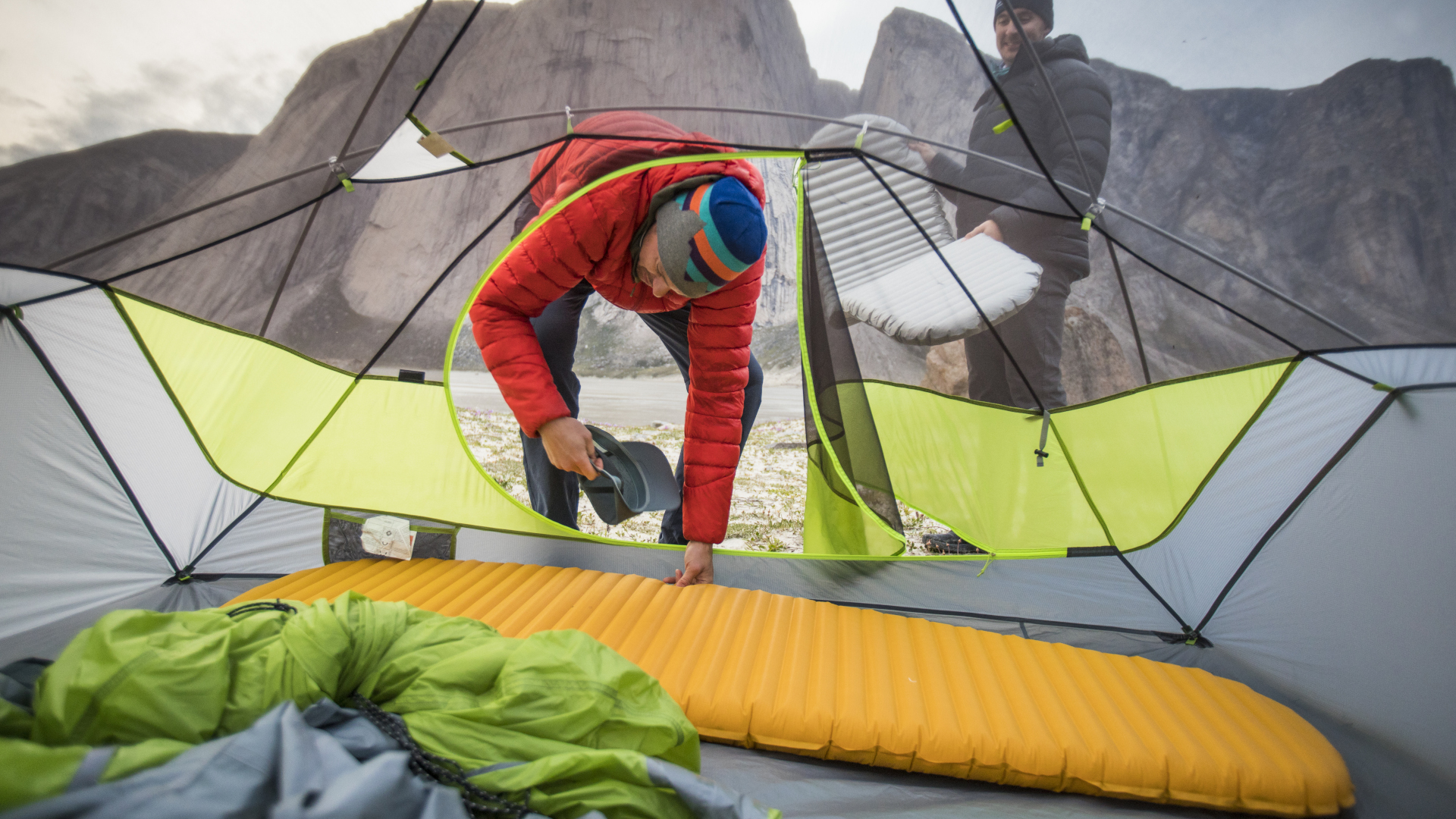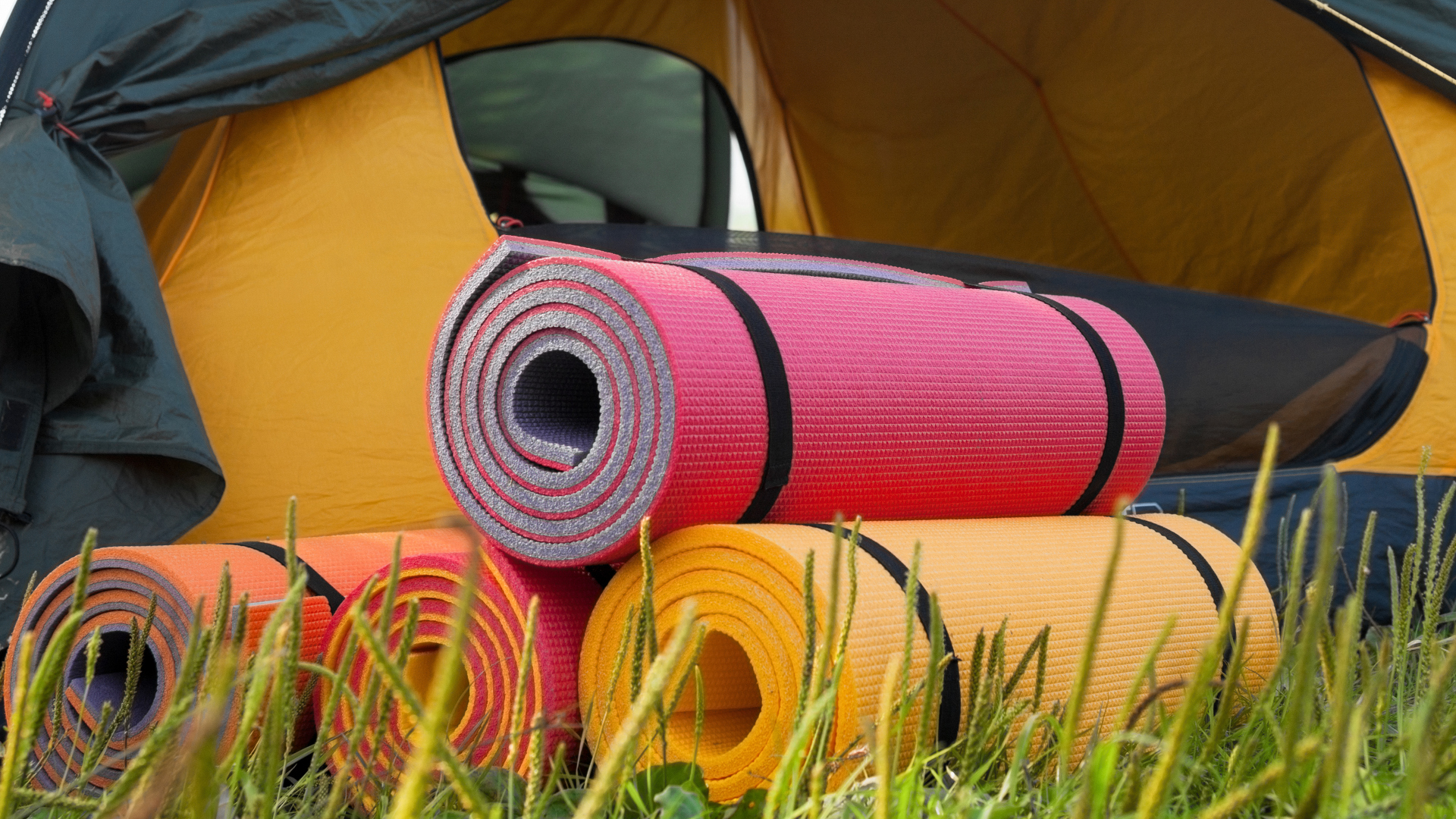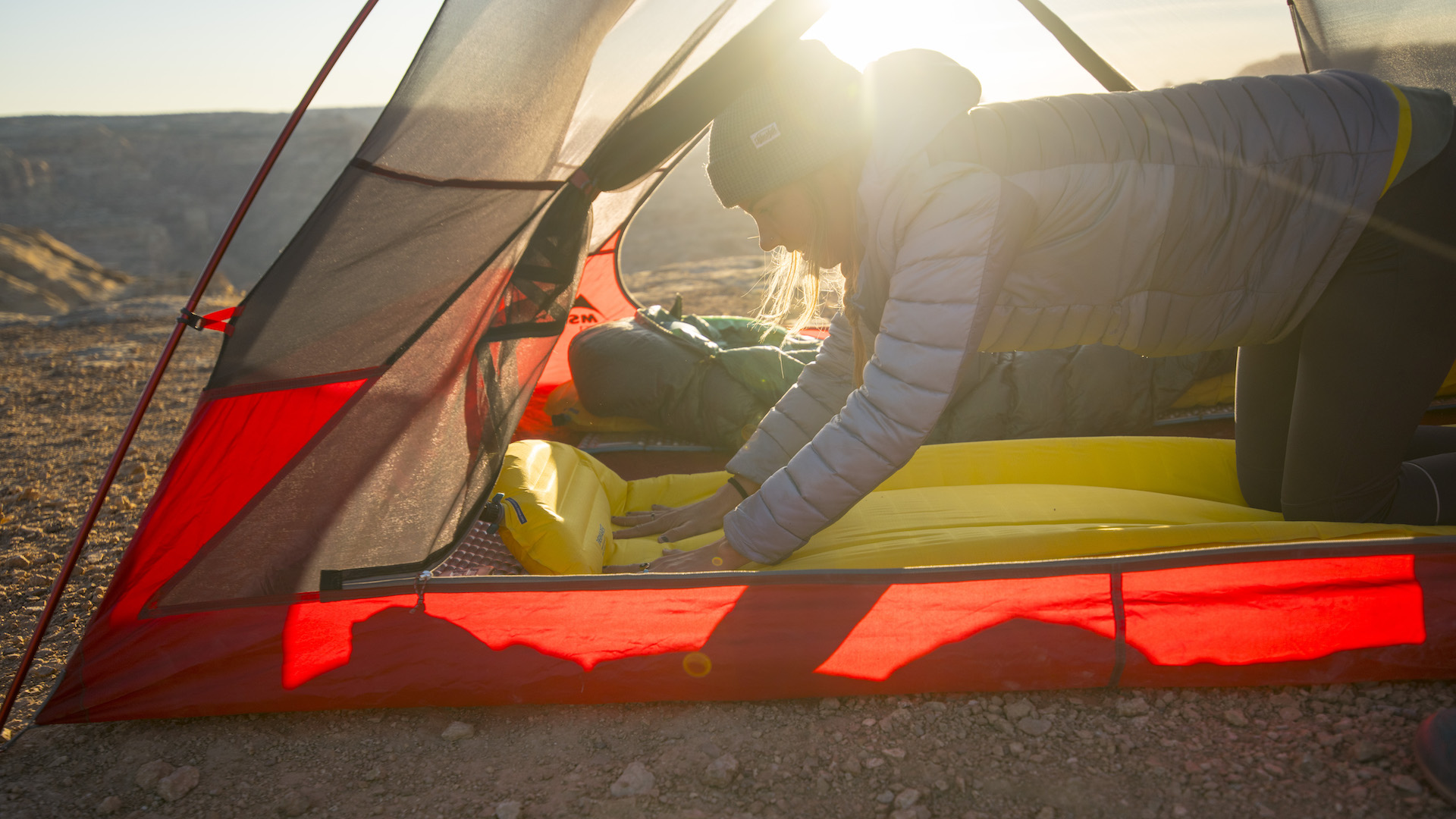Inflatable vs foam sleeping pad: how to choose
We measure the pros and cons of inflatable vs foam sleeping pads to help you get the best night’s sleep in your tent without slowing you down on the trail

When choosing the best sleeping pad for backpacking and lightweight camping adventures, you’re naturally going to be looking for something that doesn’t add a lot of weight to your backpack and packs down small, but after a long day of hiking, you also want as much comfort as you can carry. In this article, we measure the pros and cons of the inflatable vs foam sleeping pad to help you enjoy the best night’s sleep in your tent without slowing you down on the trail.
What’s the difference?

Though they’ve been around for decades, it’s mostly in recent years that inflatable sleeping pads have become very popular among campers. These pads are made with a shell of waterproof material and a valve that you typically just blow into to inflate them – bigger versions may come with a pump, but your average one-person backpacking pad just requires a few big huffs and puffs. When deflated, these pads roll up to a small cylinder shape and go back in their stuff sack.
Before there were inflatable sleeping pads, campers relied on the classic foam sleeping pad. These are made using Closed Cell Foam which is a dense, waterproof foam. These typically roll up like a yoga mat – though some models fold up – and strap onto your backpack.

Weight
Obviously if you’re backpacking, every ounce matters, and the good news is that both of these options are really lightweight. Though weights vary, you can easily find a foam sleeping pad that doesn't weigh much more than 1lb and a good inflatable sleeping pad will weigh as little as half that. So, if you’re going ultralight camping, the inflatable sleeping pad wins this round.
Packability
Where both options are lightweight, there’s definitely a difference in terms of how small they pack down. A good inflatable pad will compress down to about the size of a water bottle and fit neatly inside your pack, whereas foam pads will retain their width once rolled, so these will need to strap on to your backpack, though this means more room in your pack for other things. Even though foam pads are waterproof, they’ll still be exposed if you get rained on and will need a wipe off with your towel before they go in your tent. If you’re looking for a streamlined approach, or expecting wet weather, inflatable pads win again.

Comfort
Comfort is definitely a very subjective criteria, so we won’t back a particular horse here so much as present the pros and cons of each. Inflatable pads are thicker and can be a bit more forgiving, especially if you let a little air out, and many people find that more comfortable. However they can also feel a little unstable or wobbly, which you may not like, and if they’re not fully inflated, you might find that when you’re side sleeping, your hip is touching the ground. Ouch.
Foam pads are firmer which means some people might find them less comfortable, while those with back pain tend to prefer them, and of course they’re more stable, but they are also thinner.
Advnture Newsletter
All the latest inspiration, tips and guides to help you plan your next Advnture!
Warmth
The best way to gauge how warm a sleeping pad will be is to check its R-value, which is a system rating warmth from 1-7 and the higher, the warmer. However, inflatable sleeping pads are usually a bit warmer since they trap more air, so for high alpine and cold weather camping, these are the obvious choice, whereas for summer and sea level camping, you can get away with a foam pad.

Ease of use
In all honesty, if you’re having trouble operating a sleeping pad, you’re probably doing something wrong. That said, inflatable sleeping pads do require you to inflate them each night, which could be an issue if you're asthmatic, and can involve a bit of wrestling in the morning to get them back into their stuff sacks, whereas all that’s required of a foam pad is unrolling it, so they’re definitely lower maintenance.
Durability
Naturally, you want your camping gear to last and durability is an area where the more basic foam pad actually comes out on top. There’s not a whole lot that can go wrong with these and even with many years of rough handling, the worst you might see is the odd gouge mark that won’t really affect its performance much, though they can become a bit harder to lay out flat if you store them rolled out, which is annoying. Inflatable sleeping pads, however, are prone to small holes and tears that leak air and the valve can break too. They often come with their own repair kit and you’ll want to read our sleeping pad repair guide in case you spring a leak.

Price
Last, but not least, the difference in price tag might be enough to sway you if you’re still on the fence. Foam pads are very affordable, typically within the $20 - $45 range, so if you’re on a budget, there’s your answer. Inflatable sleeping pads can also be found in that price range, but if you’re looking for a high-end one that features all the pros you’ve read about so far, such as warmth and packability, you’re looking at spending upwards of $150.
| Header Cell - Column 0 | Inflatable sleeping pad | Foam sleeping pad |
|---|---|---|
| Weight | Lightweight, can be as light as 0.5lbs | Lightweight, but closer to a 1lb or heavier |
| Packability | Can pack down to the size of a water bottle and fit in your backpack | Roll up like a yoga mat and strap onto your backpack |
| Comfort | Usually thicker and more yielding, but can feel wobbly | Stable and firm |
| Warmth | Depends on the pad but usually have a higher R-value and better for cold weather | Lower R-value but fine for milder conditions |
| Ease of use | Requires inflation, deflation and stuffing | Unroll and you're ready to go |
| Durability | Prone to small leaks and holes that need repaired | Hardwearing |
| Price | The better the pad, the pricier | Inexpensive |
Inflatable vs foam sleeping pad: the verdict
So what will it be? Will you spring extra for the ultra lightweight inflatable sleeping pad that fits in your pack and keeps you warm during cold nights on the ground but might leak air, or will you opt for the dependability of the more basic (and budget) foam pad and enjoy a bit more room in your pack and have a little money leftover for the best sleeping bag? If you still can’t decide, head on over to our article on how to choose a sleeping pad for more advice.
Julia Clarke is a staff writer for Advnture.com and the author of the book Restorative Yoga for Beginners. She loves to explore mountains on foot, bike, skis and belay and then recover on the the yoga mat. Julia graduated with a degree in journalism in 2004 and spent eight years working as a radio presenter in Kansas City, Vermont, Boston and New York City before discovering the joys of the Rocky Mountains. She then detoured west to Colorado and enjoyed 11 years teaching yoga in Vail before returning to her hometown of Glasgow, Scotland in 2020 to focus on family and writing.

